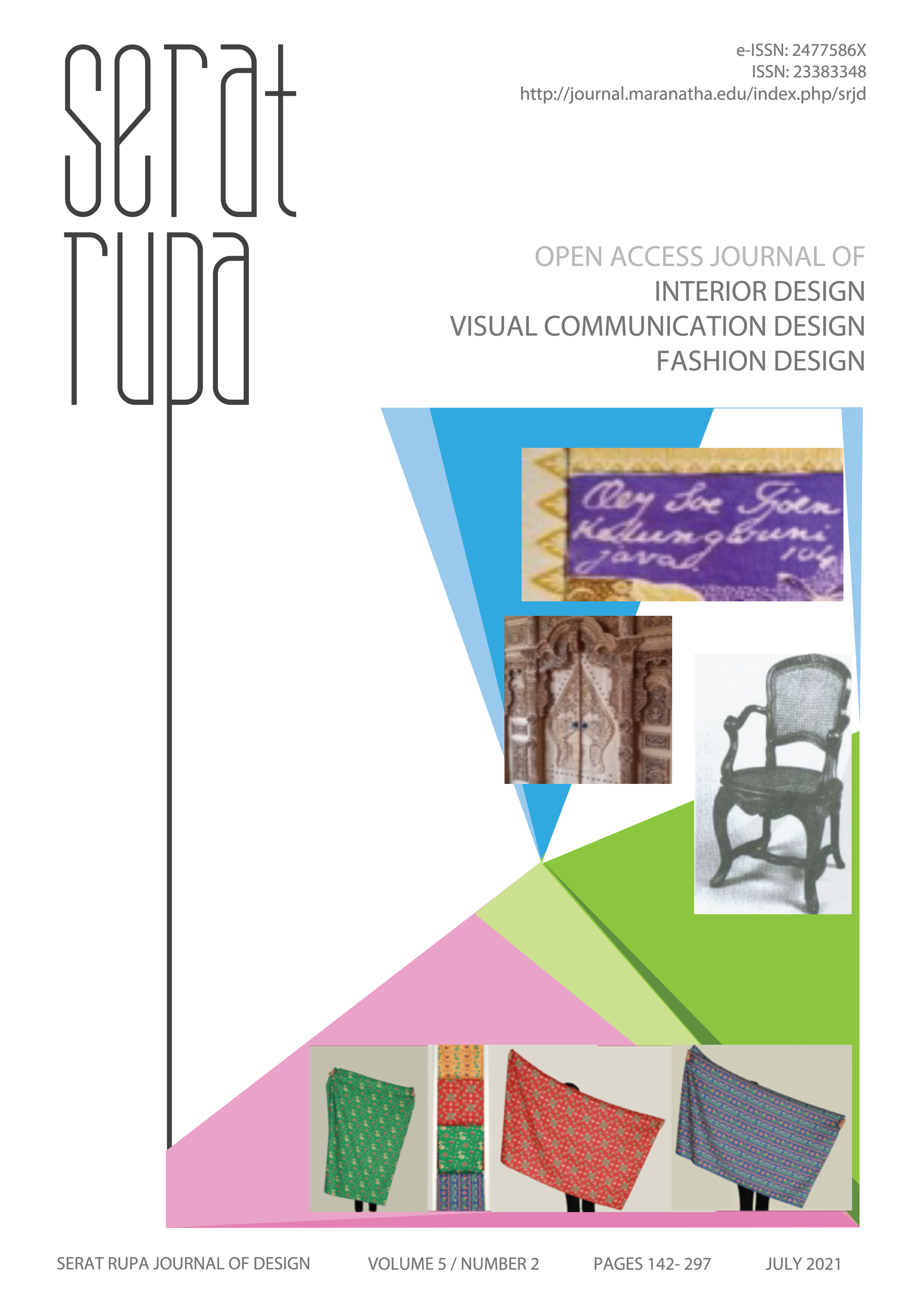PERGESERAN FUNGSI DAN TERITORIALITAS PADA RUANG RUMAH ADAT CIKONDANG
Main Article Content
Abstract
Downloads
Article Details
References
Altman. (1980). Human Behavior and Environment. Plenary Press, New York & London.
Burhanuddin, Setioko, B. & Suprapti, A. (2015). “Teritorialitas Ruang pada Jalur Penggal Jalan Kyai H.Agus Salim Kota Semarang“ “Hubungan Perilaku Pengguna Teritori dengan Seting Jalur Jalan”. Seminar Nasional “Menuju Arsitektur dan Ruang Perkotaan yang Ber-kearifan Lokal” PDTAP, Semarang, 12 Mei 2015, 55.
Fatimah, Dwi. (2010). Gender dalam Teritori. Jurnal Waca Cipta Ruang. Vol II (II), 1-8.
Indriani. Ni Ketut Ayu. (2019). Faktor-faktor Pembentuk Teritorialitas di Permukiman Kampung Jawa Kota Denpasar. Jurnal Sangkareng Mataram. Vol 5 (3), 32-40.
Hadinugroho, D.L.(2002). Ruang dan Perilaku Suatu Kajian Arsitektural. Artikel Ilmiah Arsitektur. Universitas Sumatera Utara Digital Library. 16 Hal.
Lang, Jon. (1987). Creating Architectural Theory: The Role of The Behavioral Sciences in Design, Privacy, Territoriality and Personal Space – Proxemic Theory. Van Nostrand Reinhold, New York.
Nuraini, R.D. & Ikaputra. (2019). Teritorialitas dalam Tinjauan Ilmu Arsitektur. Jurnal INERSIA, Vol XV.(1), 12-22.
Nurhamsyah. (2016). Tipe Setting Teritori Teras Akibat Aktivitas Tambahan Penghuni di Permukiman Pesisir Sungai Kapuas. Vol 3(1), 1-14.
Rapoport, Amos. (1969). House Form and Culture. Englewood Cliffs, N.J.:Prentice Hall
Rif’ati, Heni F. & Sucipto, Toto. (2002). Kampung Adat dan Rumah Adat di Jawa Barat, Dinas Kebudayaan dan Pariwisata Propinsi Jawa Barat, Bandung.

